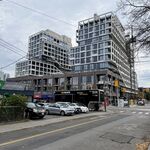So what are the "advantages"?
By 'speed profile' I'm not talking about just average speed (although that would be an outcome). Show you understand the subway operation by outlining how long (both time and distance) it would take to get up to the top operating speed between stations, how long (both time and distance) it would run at this top speed and how long (both time and distance) it would take to decelerate coming up to the next station.
Ok, in this part, acceleration and deccelation of the trains and distances between the stations have a lot to do with this. The faster it accelerates and deccelerates, the shorter time it will need to reach its' top operating speed, thus it will longer travel with its' top operating speed. Anyhow, these are more technical details that I really don't know how to explain well. I will provide other things below. Afterall, I'm no mechanic/engineer or some type of expert.
Show the numbers both for the current tracks and for your proposed tracks. That would quantify the "advantages". unless you can actually provide evidence to the contrary.
Very well. The numbers of the current tracks (at least from the section Kipling to Bathurtst) are the ones mentioned. The evidence I'll provide is from the subway in Athens, the Athens Metro, which consists of the slab track. First of all, let me clarify that I'm not advertising or anything like that. The whole
Line 2 of the Athens Metro, Aghios Antonios (St. Anthony) - Aghios Dimitrios (St. James) currently is
10.9 kilometrs long and consists
14 stations. Coincidentally, it's the same length and stations number from Kipling to Bathurst! Can you believe it? As funny as this may sound, it's true!

Seriousely, it is. Check here:
http://www.amel.gr/index.php?id=22&L=1
And here's the map of it:
http://www.amel.gr/index.php?id=54&no_cache=1&L=1#print
It's the
red line. Anyway, to make a long story short, from the beginning of the line until the end, it takes
18 minutes flat. I know, it's not a big difference from the 20 minutes and something from the current track here. But, keep in mind though that the majority of the line is curves and turns, and a lot of stations, particularly those close to the downtown core are spaced pretty close to each other. There's no telling how fast it would reach the the terminal station if the majority of the line was straightline. And all that for a 10.9 kilometer distance. For a bigger distance, even more time will be shaved off. So, based on all the above, speed is one advantage, the smooth feel is another. Regarding the smooth feel, I don't know how to explain it well, but I'll try.
As lafard posted previously, you might also want to be aware of other track issues (turns, hills, cross-over tracks, switches, etc) that could limit operating speeds even when absolute distance might still suggest an advantage to faster running.
Yes I'm aware of those issues mentioned and therefore don't expect speed gain here.




